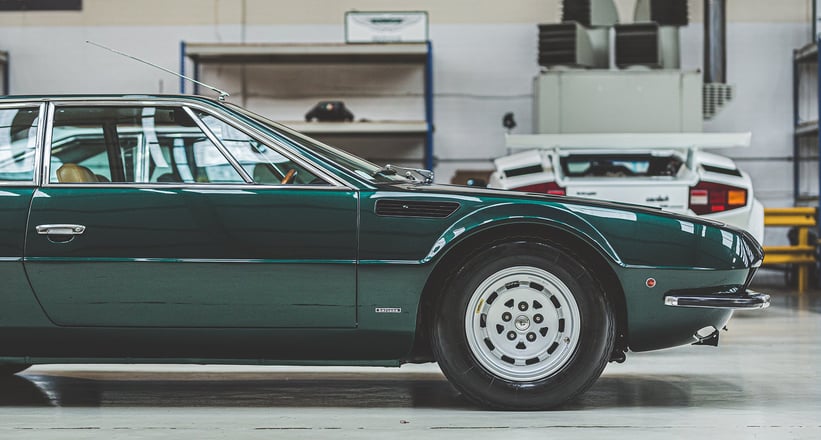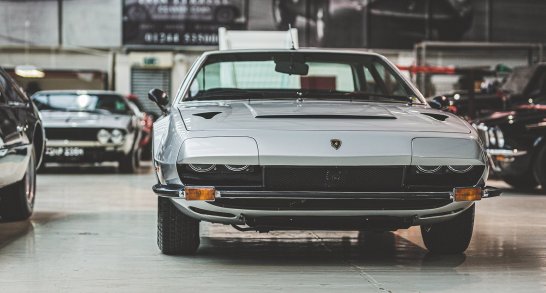


Living in the shadows of the more glamorous Lamborghini Miura, the 400 GT Jarama was the last front-engined V12 Gran Turismo launched under the personal guidance of Ferruccio Lamborghini. It was revealed 50 years ago, at the Geneva exhibition in March of 1970. Bertone and Marcello Gandini were responsible for the design of this project – it was their third for Lamborghini and was more of a conventional sports car than their previous outrageous and extravagantly styled designs.


Bertone’s style for the Jarama was aggressive and compact, with angular frontal lines softened by a rounded front edge. The rear three-quarter view, meanwhile, had a trapezoidal shape and the small lip spoiler at the rear edge of the roof added a symbolic touch of aerodynamic flair. Thanks to its wide glazed area, the Jarama afforded excellent all-around visibility. In order to feed fresh air into the interior, two NACA ducts were placed on the bonnet and the headlights were covered with small eyelids. Miura wheels completed the look.



With the launch of the 400 GTS Jarama in 1972, an additional, wider air scoop was added to the bonnet and the front fenders gained side air vents. New five-bolt wheels also appeared. Ingegnere Paolo Stanzani admitted that the Jarama was a design based on his own aesthetic taste, a ‘classical beauty’. He recognised that this was a mistake after the Miura – the Jarama didn’t fulfil Lamborghini customers’ expectations. That’s the reason the Countach was so provocative one year later.



With a wheelbase 270mm shorter than that of the Espada, the Jarama shares the same underpinnings with its mid-engined sister, which makes it surprisingly agile. Powered by the 3.9-litre V12, the car produces 350HP at 7,500rpm in 400 GT form and 365HP in GTS guise. Most GTSs were supplied with ZF power-assisted steering, several received a Chrysler three-speed Torque Flite automatic transmissions and 20 GTs were made with twin sunroof panels. Just 177 Jarama 400 GTs were sold, while an even fewer 150 GTSs left the factory.



Driving these bulls in the British countryside is an absolute pleasure. The green example has been restored by marque specialist Iain Tyrrell, while the silver car, probably the lowest-mileage Jarama known, has received a comprehensive detailing makeover from Iain and his team. Both cars are superb.
Here are Ferruccio Lamborghini’s own words, from an interview in Thoroughbred & Classic Car magazine from January 1991. “I preferred the Jarama to all the others, because it is the perfect compromise between the Miura and the Espada. The Miura is a sports car for the young at heart who want to go like hell and love to be seen. Myself, I considered the Miura too extrovert for a while. In turn, the Espada was my Rolls-Royce: still quite fast, but also large and comfortable. The Jarama is perfect if you just want to have one car.” What more could anyone add?


It’s strange that Lamborghini itself is not celebrating nor communicating about the 50th birthday of the Jarama. Does it betray the possibility that Sant’Agata could launch a Jarama successor in the near future? Now there’s a thought.
Photos: Robert Cooper for Olivier Nameche © 2020

























































